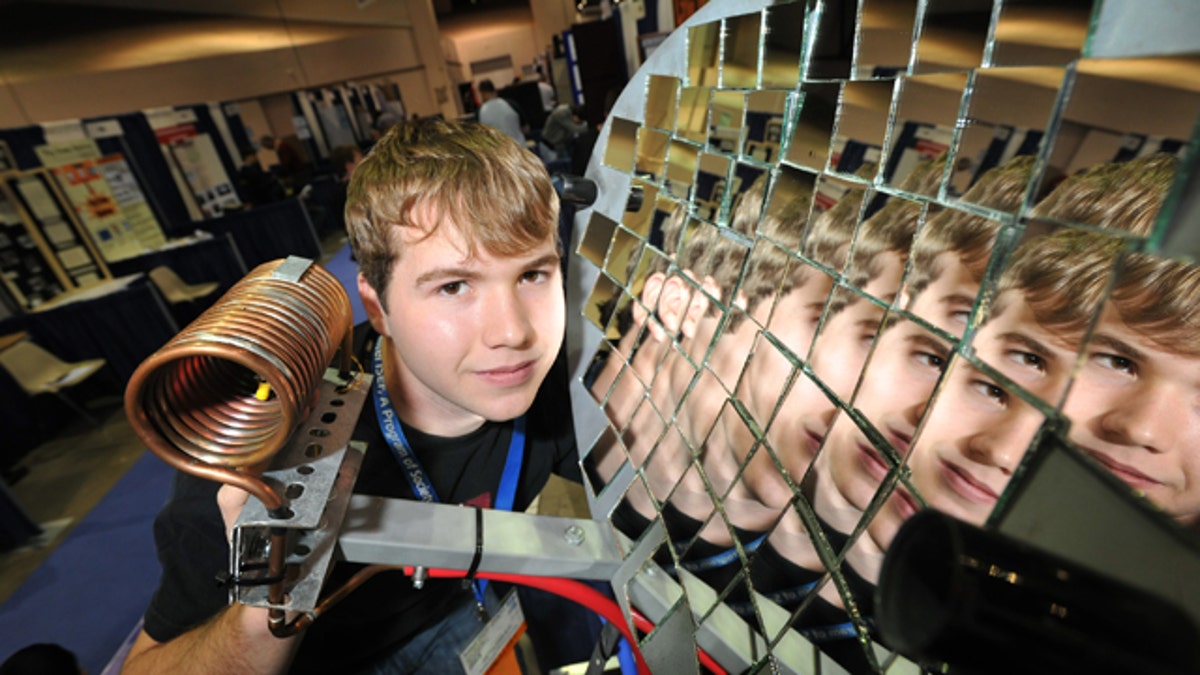
May 16, 2011: Seth Fisher, 16, from Bernville, Pa., demonstrates his solar heat concentrator at the Intel International Science and Engineering Fair, the world’s largest pre-college science competition, in Reno, Nev. (Intel)
U.S. eighth-graders made modest gains on the latest national science exam, but more than two-thirds still lacked a solid grasp of science facts, according to data released Thursday.
The 2011 National Assessment of Educational Progress (NAEP), an exam administered by the Department of Education, showed that 32 percent of students were proficient in science, compared with 30 percent the first time the new version of the science exam was administered, in 2009.
The continued lackluster showing prompted concern from teachers and policy makers who say it is further evidence that schools are leaving American children unprepared for college and the work force.
"This is deeply disappointing," said Gerry Wheeler, interim executive director of the National Science Teachers Association. "This performance won't get us where we need to go to create the science-literate work force we need."
Teachers and education advocacy groups cite various possible causes for weak scores, including a lack of qualified science teachers, budget cuts and a narrowing of the curriculum caused by No Child Left Behind. That 2002 federal law caused schools to be evaluated based solely on math and reading tests, which prompted some districts to reduce science education.
Steven Long, who heads the science department at Rogers High School in Rogers, Ark., blamed classroom standards for science in many states that he said are "mile wide, inch deep."
"There is no coherency in science education in the US so we end up with a scattered approach, and that harms our students," he said.
The 2011 NAEP was given to a representative sample of 122,000 eighth-graders last spring in public and private schools nationwide. It measures knowledge of physical, life, and earth and space sciences on a point scale of 0 to 300. Scores for fourth-graders will be released later this year.
Read more about U.S. students' troubling science scores at the Wall Street Journal.
